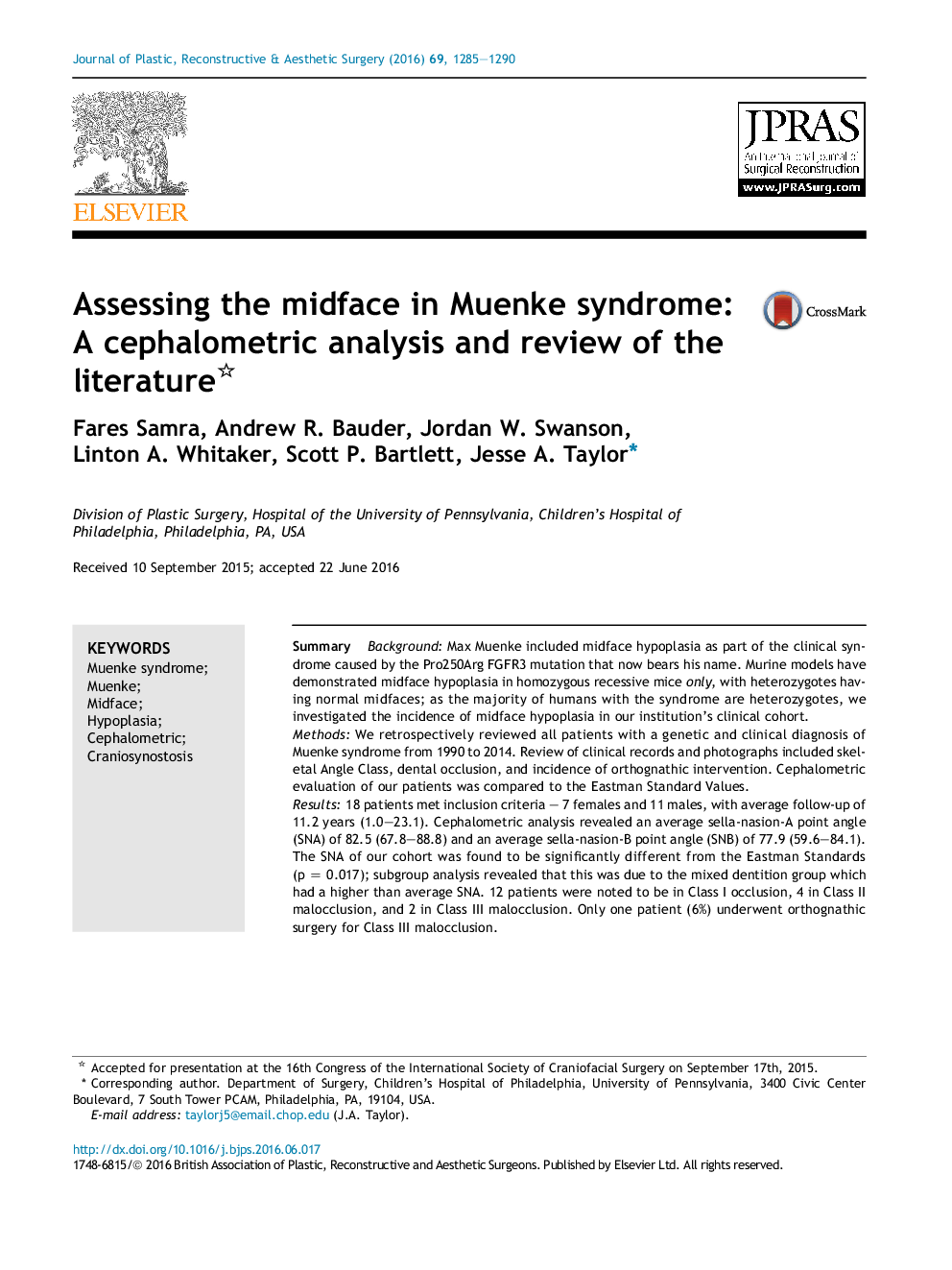| Article ID | Journal | Published Year | Pages | File Type |
|---|---|---|---|---|
| 4117127 | Journal of Plastic, Reconstructive & Aesthetic Surgery | 2016 | 6 Pages |
SummaryBackgroundMax Muenke included midface hypoplasia as part of the clinical syndrome caused by the Pro250Arg FGFR3 mutation that now bears his name. Murine models have demonstrated midface hypoplasia in homozygous recessive mice only, with heterozygotes having normal midfaces; as the majority of humans with the syndrome are heterozygotes, we investigated the incidence of midface hypoplasia in our institution's clinical cohort.MethodsWe retrospectively reviewed all patients with a genetic and clinical diagnosis of Muenke syndrome from 1990 to 2014. Review of clinical records and photographs included skeletal Angle Class, dental occlusion, and incidence of orthognathic intervention. Cephalometric evaluation of our patients was compared to the Eastman Standard Values.Results18 patients met inclusion criteria – 7 females and 11 males, with average follow-up of 11.2 years (1.0–23.1). Cephalometric analysis revealed an average sella-nasion-A point angle (SNA) of 82.5 (67.8–88.8) and an average sella-nasion-B point angle (SNB) of 77.9 (59.6–84.1). The SNA of our cohort was found to be significantly different from the Eastman Standards (p = 0.017); subgroup analysis revealed that this was due to the mixed dentition group which had a higher than average SNA. 12 patients were noted to be in Class I occlusion, 4 in Class II malocclusion, and 2 in Class III malocclusion. Only one patient (6%) underwent orthognathic surgery for Class III malocclusion.ConclusionsWhile a part of the original description of Muenke syndrome, clinically significant midface hypoplasia is not a common feature. This data is important, as it allows more accurate counseling of patients and families.Level of Evidence: III
